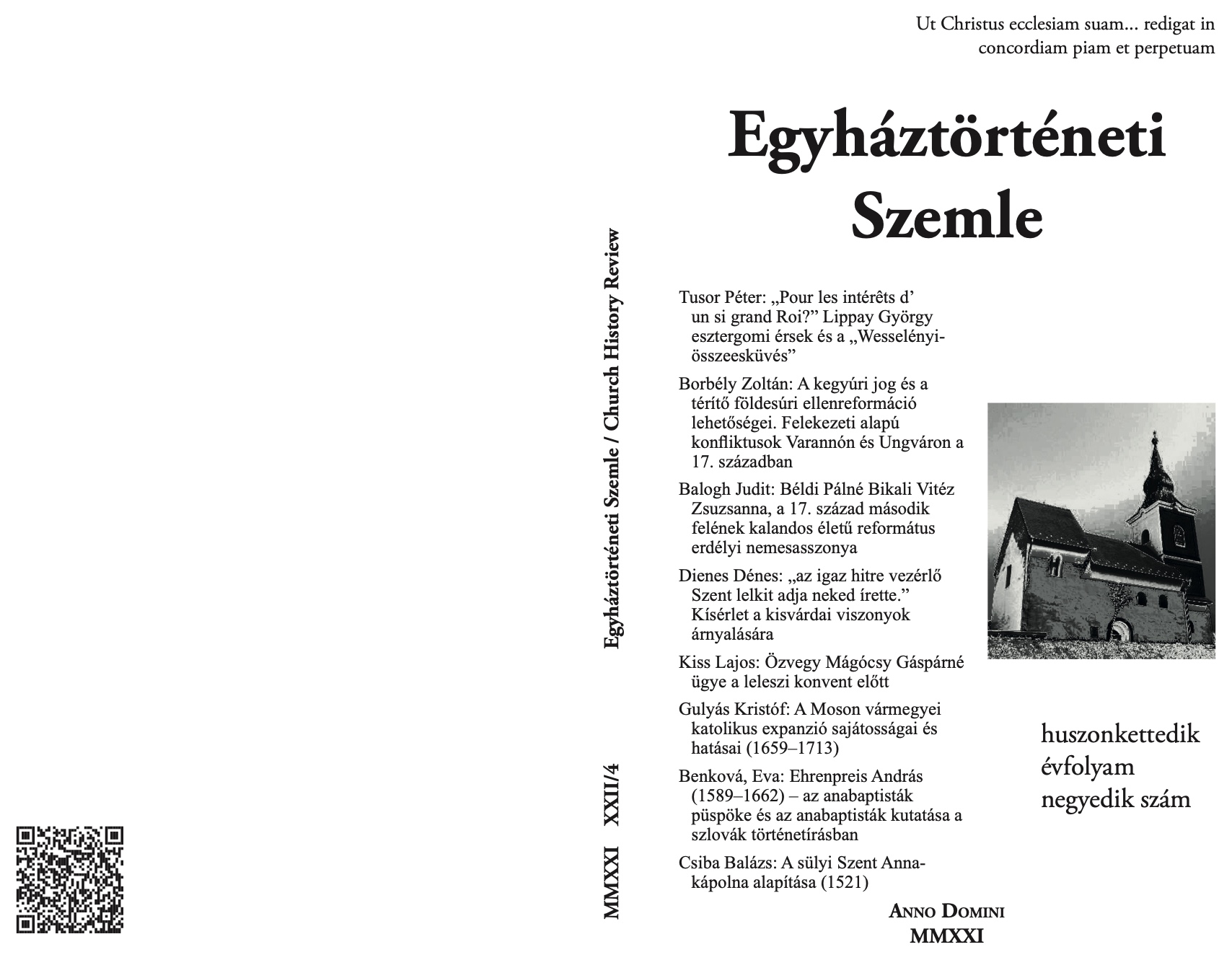A Moson vármegyei katolikus expanzió sajátosságai és hatásai (1659–1713)
DOI:
https://doi.org/10.54231/ETSZEMLE.2021.4.6Kulcsszavak:
katolikus terjeszkedés, felekezetek, etnikai csoportok, arisztokrácia, nemességAbsztrakt
A tanulmány célja a katolikus terjeszkedés kontextusának bemutatása, a nyugat-dunántúli megye, Moson történetének fordulópontja. Kutatásom időtartama 1659–1713., a források alapján, a 18. századi betekintéssel, középpontjában a felekezetek és etnikai csoportok átszervezése, valamint a helyi arisztokrácia és nemesség viselkedése állt. Munkám megmutatta a 17. századi események társadalomformáló hatását és a helyi felekezeti struktúra átalakításának társadalmi-földrajzi fejleményeit.
Végül megpróbáltam történeti, elméleti modellek segítségével értelmezni a korszakot, Ebből a szempontból ki kell emelnem a társadalomtörténeti esemény társadalomtörténeti jelenségként való alkalmazhatóságának vizsgálatát, valamint Heinz Schilling és Wolfgang Reinhard hitvallási modelljét. Vizsgálódásom eredménye a földesurak, a katolikus egyház, az állam és a megye közötti kölcsönhatás megfigyelése és elemzése volt. Ez az együttműködés erőteljes hatást gyakorolt Moson megye felekezeti összetételének átalakítására, egységessé és katolikussá válására. Új társadalmi struktúra jött létre, amely hosszú távon befolyásolta a megye társadalmának fejlődését és történetét.
Downloads
Letöltések
Megjelent
License
Copyright (c) 2022 Gulyás Kristóf (Szerző)

This work is licensed under a Creative Commons Attribution 4.0 International License.
A szerző(k) fenntartják a művük szerzői jogait.
Az Egyháztörténeti Szemle nem korlátozza a szerzők jogait, hogy a kézirataikat, vagy kéziratváltozataikat preprint szervereken, vagy más tárhelyen elhelyezzék. Ez az alábbi formátumokra általánosan vonatkozik.
- Beküldött verzió
- Elfogadott verzió (Szerző által elfogadott kézirat)
- Közzetett verzió (Rekord verziója)










